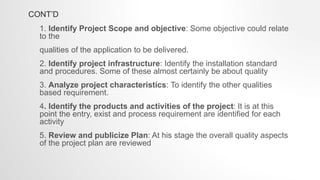This document defines key concepts related to quality in software engineering, including definitions of quality, software quality, and several quality factor frameworks. It discusses Garvin's quality dimensions, McCall's quality factors, ISO 9126 quality factors, and targeted quality factors. The document also covers concepts like good enough software and the cost of quality.






























